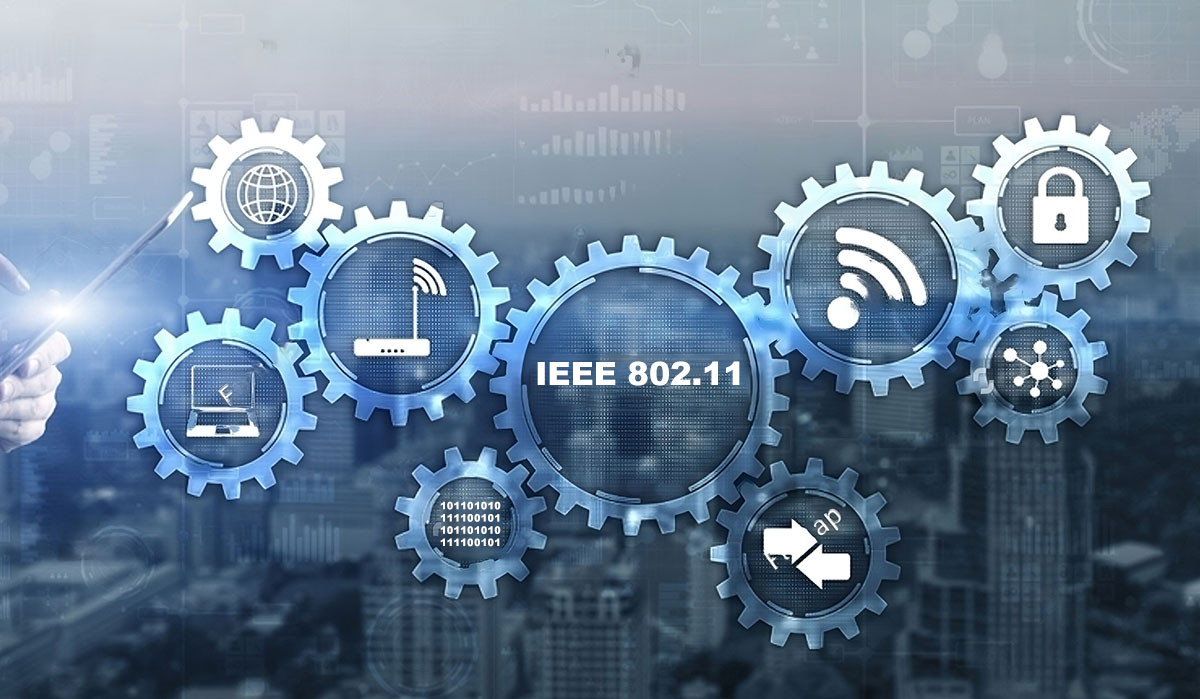Revolutionizing Enterprise Networks in UAE, KSA and Oman

In the rapidly evolving landscape of enterprise networks, EZELINK stands at the forefront, poised to transform network operations and infrastructure. This comprehensive overview delves into key findings, strategic planning assumptions, and recommendations, providing insights into the future of enterprise networking.
Key Findings:
- Automation and AI Integration:
- As per Gartner, the shift towards automated processes enabled by artificial intelligence is imminent within the next three to five years.
- EZELINK’s approach prioritizes AI-enabled capabilities and automation, paving the way for more efficient and responsive network operations.
- Skills Challenges in Automation:
- Organizations face challenges in acquiring skills for automation, given staffing constraints and the rapid pace of technological change.
- EZELINK recommends dedicating 10% of staff time to testing new technologies, fostering a culture of continuous learning and skill development.
- Transition to Zero Trust Principles:
- Network and security infrastructures are predominantly siloed, but a shift towards implementing zero trust principles is underway.
- EZELINK advocates increased collaboration between networking and security teams, aligning with the industry’s move towards secure access service edge (SASE) and zero trust network access (ZTNA).
Recommendations:
- Mandate Automation in Product Criteria:
- EZELINK suggests mandating automation and open APIs in network product evaluations, emphasizing sustainability as a crucial criterion.
- Cultivate Skills Through Testing:
- Setting aside 10% of staff time for testing new technologies enhances skill development, ensuring teams stay abreast of emerging trends.
- Promote Collaboration Between Teams:
- EZELINK emphasizes the importance of collaboration between networking and security teams, especially in the deployment of advanced technologies like SD-WAN, SASE, and ZTNA.
- Consider SASE Offerings in Decisions:
- EZELINK recommends including SASE offerings in decisions related to SD-WAN, secure web gateway, next-generation firewall, ZTNA, and cloud access security broker investments.
Strategic Planning Assumptions:
- Rise of AI in Initial Network Configuration:
- EZELINK anticipates that generative artificial intelligence (GenAI) technology will account for 20% of initial network configuration by 2026.
- Dominance of SASE in SD-WAN Purchases:
- The strategic assumption is that 60% of new SD-WAN purchases by 2026 will be part of a single-vendor SASE offering, a substantial increase from 15% in 2023.
- Data Center Strategy Evolution:
- By 2028, over 70% of enterprises are expected to alter their data center strategies due to limited energy supply, a significant increase from fewer than 5% in 2023.
Future State of Enterprise Networks:
- EZELINK envisions a future where networks are increasingly automated, digitally assisted, and tightly integrated with security across LAN, data center, and WAN domains.
- Digitally Assisted Network Operations:
- EZELINK predicts a shift towards AI-enabled “digital co-pilots” for network teams, simplifying configurations and troubleshooting through natural language interactions.
- SASE as the Preferred Technology:
- The future state emphasizes the widespread adoption of SASE, particularly in SD-WAN deployments, offering secure connections for remote and branch users.
- Sustainability as a Critical Factor:
- EZELINK highlights the growing importance of sustainability in network investments, addressing energy shortages and aligning with circular economy mandates.
- Campus Infrastructure Driven by Software:
- Campus networking decisions will be steered by software functionality, with a focus on integrating IoT devices, private 5G, and Wi-Fi advancements.
- Zero Trust Concepts Integration:
- Zero trust networking (ZTN) is foreseen as a more familiar and implemented technology, ensuring continuous real-time assessment of user/device access based on identity and context.
- Flexible WAN Services:
- The shift towards cloud applications will drive increased adoption of SD-WAN, with a transition from traditional MPLS to internet-based alternatives, providing flexibility and improved traffic flow.
- Focus on Digital Experience (DEX):
- EZELINK stresses the importance of a DEX strategy, urging organizations to invest in digital experience monitoring tools for optimal performance of cloud-based applications.
In the ever-evolving landscape of enterprise networking, EZELINK emerges as a transformative force, addressing critical challenges prevalent in traditional network infrastructures. This overview explores key findings and sheds light on how EZELINK’s innovative solutions can reshape networking dynamics across the United Arab Emirates (UAE), Kingdom of Saudi Arabia (KSA), and Oman.
Key Findings:
- Manual Network Operations:
- Gartner estimates that most enterprise networks rely heavily on manual activities, with only 18% automating over 50% of their network operations by 2023.
- EZELINK aims to revolutionize this by ushering in advanced automation and AI technologies, ensuring efficiency and responsiveness.
- Individual Project-Focused Upgrades:
- Traditional network upgrade routines often focus on individual projects, leading to potential errors during testing and activation.
- EZELINK introduces a holistic approach, streamlining upgrades to enhance overall architecture resilience and reduce disruptions.
- Lack of Sustainability Consideration:
- Energy costs remain high globally, yet sustainability considerations are often overlooked in enterprise network evaluations.
- EZELINK emphasizes energy-efficient solutions, aligning with potential future government regulations addressing energy shortages.
- Hardware-Centric Campus Networks:
- Campus networks predominantly rely on hardware-centric solutions, posing challenges in adapting to evolving user connectivity needs.
- EZELINK promotes wireless-first strategies, ensuring flexible and easily modifiable LAN and campus network functions.
- Limited Technology Skills Acquisition:
- Organizations often focus on traditional technical skills, neglecting training in emerging technologies like automation, AI, and machine learning.
- EZELINK advocates for continuous skill development, aligning teams with the latest advancements in networking technology.
- Inflexible WAN Infrastructure:
- WAN services and infrastructure lack flexibility, primarily offering static solutions with limited adaptability.
- EZELINK introduces alternatives like Network as a Service (NaaS), providing scalable, on-demand solutions for dynamic organizational needs.
- VPN Reliance for Remote Workers:
- Traditional virtual private network (VPN) products are widely used for remote worker connections, despite drawbacks such as instability and increased latency.
- EZELINK proposes advanced secure access service edge (SASE) solutions, ensuring stable and secure remote access for employees.
- Network-Centric Tools:
- Existing tools focus on network performance, neglecting end-user Digital Experience (DEX).
- EZELINK emphasizes DEX tools, ensuring optimal performance for critical applications and reducing digital friction for employees.
Explore how EZELINK, a leading network solutions provider in the UAE, KSA, and Oman, prioritizes automation, security, and skill development in its strategic network initiatives. Discover the company’s actionable steps to enhance connectivity, drive collaboration between networking and security teams, and embrace emerging technologies for a future-ready network.
Key Priorities:
- High Priority – Automation Mandate:
- At every network refresh, EZELINK mandates automation and open APIs as evaluation criteria, emphasizing the gradual implementation of automation for tasks like backup configurations and routing table updates.
- The company aims to prioritize vendors with proven automation functionality and open RESTful APIs, ensuring seamless integration and efficiency.
- High Priority – SASE Integration:
- EZELINK encourages the inclusion of Secure Access Service Edge (SASE) offerings in decision-making processes for SD-WAN, secure web gateway, next-generation firewall, ZTNA, and CASB investments.
- Prioritizing vendors with unified SASE offerings aligns with the organization’s long-term network technology strategy, ensuring comprehensive security and performance.
- High Priority – Collaboration Between Networking and Security Teams:
- EZELINK advocates increased collaboration between networking and security teams, especially in planning and deploying Zero Trust Network (ZTN) technologies.
- The company emphasizes joint participation in the procurement process, configuration criteria alignment, and periodic collaboration meetings to enhance performance analytics and technology migration.
- Medium Priority – Skills Development Program:
- EZELINK stresses the importance of cultivating skills in existing and new staff through a talent program in coordination with HR.
- Investing in personnel, shifting hiring focus towards automation competencies, and dedicating 10% of staff time for training contribute to a skilled and adaptable workforce.
- Medium Priority – AI-Enabled Capabilities and Sustainability:
- EZELINK encourages piloting emerging AI-enabled capabilities, focusing on business-oriented automation goals for improved efficiency and cost reduction.
- The company also mandates sustainability requirements for networking equipment, ensuring a dual focus on environmental responsibility and operational expenditure savings.
- Lower Priority – Private 5G and Next-Gen Wi-Fi Evaluation:
- EZELINK suggests evaluating private 5G and next-gen Wi-Fi for improved reliability and performance in the enterprise LAN.
- The focus is on aligning investments with specific use cases, such as IoT capabilities, while considering spectrum availability to support the intended use.
- Lower Priority – DEX Investment Strategy:
- Collaborating with digital workspace teams, EZELINK advises organizations to develop a Digital Experience (DEX) investment strategy.
- By aligning DEX tools with operational and customer experience, the company emphasizes maximizing ROI and ensuring a seamless digital employee experience.













